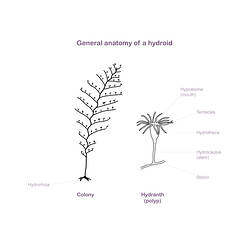General Description
Colony of individual polyps (hydranths) joined by a root-like network of tubular stolons at the base. Colony shape is tree-like or bushy (arborescent). Colour: orange. Up to 1 cm high.
Biology
This is an abundant species.
Distribution
Southern Australia (New South Wales and Victoria).
Habitat
Subtidal, forming dense communities on sponges, ascidians or hard substrates. To at least 10 m.
More Information
-
Animal Type
-
Animal SubType
-
Brief Id
Orange tree-like or bushy (arborescent) colony.
-
Maximum Size
1 cm
-
Habitats
-
Diet
Plankton or Particles
-
Diet Categories
Plankton
-
Hazards
Generally not harmful but still able to sting bare skin.
-
Endemicity
-
Commercial
No
-
Conservation Statuses
DSE Advisory List: Not listed, EPBC Act 1999: Not listed, IUCN Red List: Not listed
-
Depths
Shallow (1-30 m)
-
Water Column Locations
On or near seafloor
-
Taxon Name
-
Scientific Author
Lendenfeld, 1885
-
Common Name
Hydroid
-
Phylum
-
Class
-
Subclass
-
Order
-
Family
-
Genus
-
Species Name
generale




